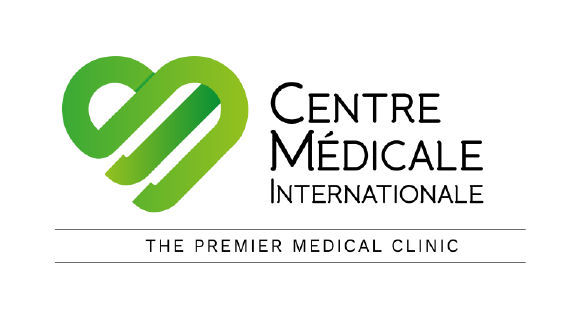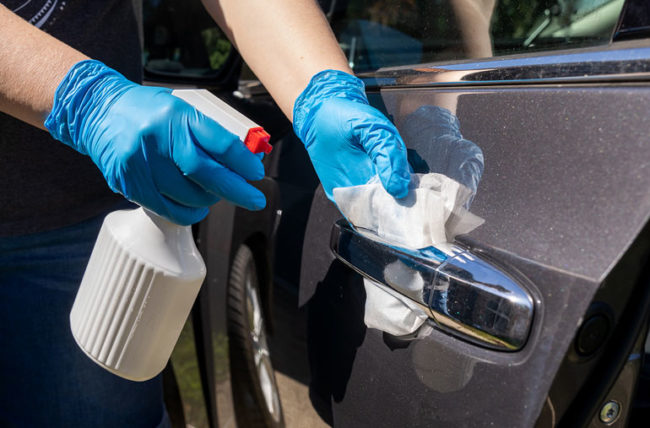How to Protect Yourself from the Coronavirus While Traveling
How to Protect Yourself from the Coronavirus While Traveling
Stay safe wherever you go
You held off on taking a summer vacation but you can’t fight the urge any longer. You need to go somewhere — anywhere — even if it’s just an hour or two away from home. And even if you’re not going anywhere now, you know that holiday travel could possibly be in your future.
Regardless of the when and where, one thing is certain. This year, you’ll need to factor in how the spread of COVID-19 could affect your plans.
Traveling during a pandemic requires a more detailed and cautious approach than before, but it can be done while minimizing risks to you. Keep reading to find out what he has to say and to discover tips that can help you stay safe whether you’re in the car, on a plane, in a cabin, or at a hotel.
Things to consider while planning your trip
As you’re planning your trip, it’s good to be mindful of every possible scenario you could encounter. By taking a proactive approach, you can help keep yourself and those traveling with you safe.
Here are a few questions from the CDC to consider as you’re creating your itinerary.
- Is COVID-19 spreading where you’re headed?
- Is COVID-19 spreading in your community?
- Will you or the people who you are traveling with be within 6 feet of others during or after your trip?
- Are the people who are traveling with you at high risk for COVID-19?
- Do you live with someone who is at high risk?
- Will the state or local government where you live or at your destination require you to stay home for 14 days after traveling?
- If you get sick with COVID-19, will you have to miss work or other obligations?
“As long as we apply our everyday precautions to our travels, the risks can be minimized significantly,” Dr. Khabbaza says. “We can do this by maintaining distance and wearing a mask around those outside of our small circles, keeping our hands sanitized and not touching our eyes, nose, or mouth if our hands are not clean. Being in environments where mask compliance is strong is also important in minimizing risk and keeping occurrences of COVID-19 transmission low.”
How to protect yourself from COVID-19 in the car
Considering our vehicles are familiar and comfortable to us, it makes sense to embrace the road warrior approach for vacation. “We tend to take road trips with those in our immediate circles so driving will be the safest route of travel during a pandemic,” Dr. Khabbaza adds.
But in order to avoid riding in style — with germs, there are some precautions you should take before you hit the road.
Start by cleaning and disinfecting your vehicle thoroughly. Wipe down all high-touch surfaces and parts (windows, seat belts, the steering wheel, door handles, controls, etc.). And be sure to keep antibacterial wipes and hand sanitizer in the car so you can wipe down everything and passengers can clean their hands after each stop.
Don’t bring too many people along for the ride
When it comes to passengers, the CDC recommends limiting the number of people in your vehicle if possible. And since you all can’t be six feet apart, it doesn’t hurt to wear masks in the car, especially if you’re traveling with someone who is at high risk for COVID-19. Dr. Khabbaza also recommends wearing a mask in the car especially when you’re traveling with someone who is outside of your immediate circle.
Before stopping for gas or food, designate a runner for travel-related tasks. Have one or two people who aren’t at high risk go in to grab snacks or buy gas if you don’t want to pay at the pump. Just make sure your designated runners mask up and clean their hands thoroughly before getting back in the car. And as you’re filling up, avoid scrolling through your phone while pumping gas to minimize the risk of any contamination.
As you’re cruising to your destination, keep the windows open if possible to let fresh air in and boost ventilation. If you’re headed to a warmer area and air conditioning is a must, set the air ventilation or air conditioning to non-recirculation mode.
How to stay safe in rideshare vehicles
Rideshare services have made it much easier for us to get around whether we’re at home or out of town. Before you hop into a rideshare vehicle, make sure you have hand sanitizer with you to use once you arrive at your destination. Also, it is not advisable to accept complimentary drinks, magazines, candy or anything else that sometimes is offered to riders.
“When getting in a rideshare vehicle, it is important that both you and the driver are wearing masks, especially since you’re in a small space with a stranger for a good amount of time,” Dr. Khabbaza says. “You can even wear eye protection in this setting to minimize risk of infection or transmission.”
Pump the brakes on the carpool option
The carpool option with rideshare apps might allow you to save big during certain times of the day, but right now, it’s not worth it given the increased risk that comes with being in close proximity to a stranger.
So, keep rides limited to you and the people you’re traveling with. And when possible, ride in the back seat instead of the passenger’s seat to keep a little distance between you and the driver.
Dr. Khabbaza points out that some rideshare drivers have added a partition between the front and back in their vehicles. This minimizes risk of transmission significantly. He suggests doing a little research on each rideshare company beforehand so you’ll have a better idea of the safety features that are available in the area.
How to protect yourself from COVID-19 when you fly
Those cheap flights are pretty darn tempting right now. If you decide to take to the skies, keep in mind that staying safe on a plane requires far more than just wearing a mask. Before you even get to the plane, you have to contend with check-in terminals and security lines. This means coming in contact with frequently touched surfaces and being around a lot of people. While your concern might be centered on staying safe on the plane, you should focus more on protecting yourself before boarding.
“The wild card with modes of travel like flying is that you have no idea who will be seated next to you,” Dr. Khabbaza explains. “If masking is enforced during the flight, hands are kept clean and you avoid touching your face, the risk to you is low.”
According to the CDC, most viruses don’t spread easily on flights because of how air circulates and is filtered on airplanes. In an effort to stop the spread of COVID-19, many airlines have taken necessary precautions to keep their planes sanitized and safe for travelers.
Airplanes these days have HEPA filters and clean outdoor air as well as recirculated air passes through them. Many airlines are thoroughly cleaning and even fogging planes with electrostatic disinfectant that clings to seatbelts and other high-touch surfaces. Some airlines have even adjusted seating arrangements to allow for more room between passengers.
As for personal protection, a number of airlines require face coverings to board flights. Some are even providing antibacterial wipes for passengers. The TSA is currently allowing one 12-ounce container of liquid hand sanitizer in carry-on bags until further notice. This is good news because you can always use your sanitizer or wipes to clean armrests, seats, light buttons and even the bathroom door handle for extra peace of mind.
Should you fly right now?
Ultimately, it’s up to you. Just keep the risks in mind when making the decision. If you’re sick or at higher risk for the coronavirus, it is probably best to stay on the ground. The same goes for any friends or family members who want to travel with you. “The decision on whether you should fly depends on your personal level of risk tolerance and being aware of the local rates of COVID-19 at both your starting and final destinations,” says Dr. Khabbaza. “If you do choose to fly, it can be done safely by sticking to the basics.”
How to protect yourself from the coronavirus when camping
Not being able to frequent public places that we were accustomed to pre-pandemic has caused many of us to turn to our local parks. This is not a bad thing as being in nature can help reduce stress and allow us to reconnect with ourselves.
If you’ve decided to indulge in some forest therapy, here are some camping do’s and don’ts from the CDC:
DO:
- Visit parks that are close to your home.
- Check with the park or recreation area in advance to prepare safely, to find out if the bathroom facilities are open and to get a better idea of what services are available.
- Stay at least 6 feet away from others you don’t live with and take the necessary precautions to prevent COVID-19.
- Carefully consider use of playgrounds and help children follow guidelines.
- Play it safe around and in swimming pools, hot tubs, and water playgrounds by keeping space between yourself and others.
DON’T:
- Visit parks if you are sick with, tested positive for COVID-19, or know you were recently exposed to COVID-19.
- Visit crowded parks.
And of course, stay on top of hand hygiene like you would if you were at home.
Read full article HERE
Source: Cleveland Clinic





